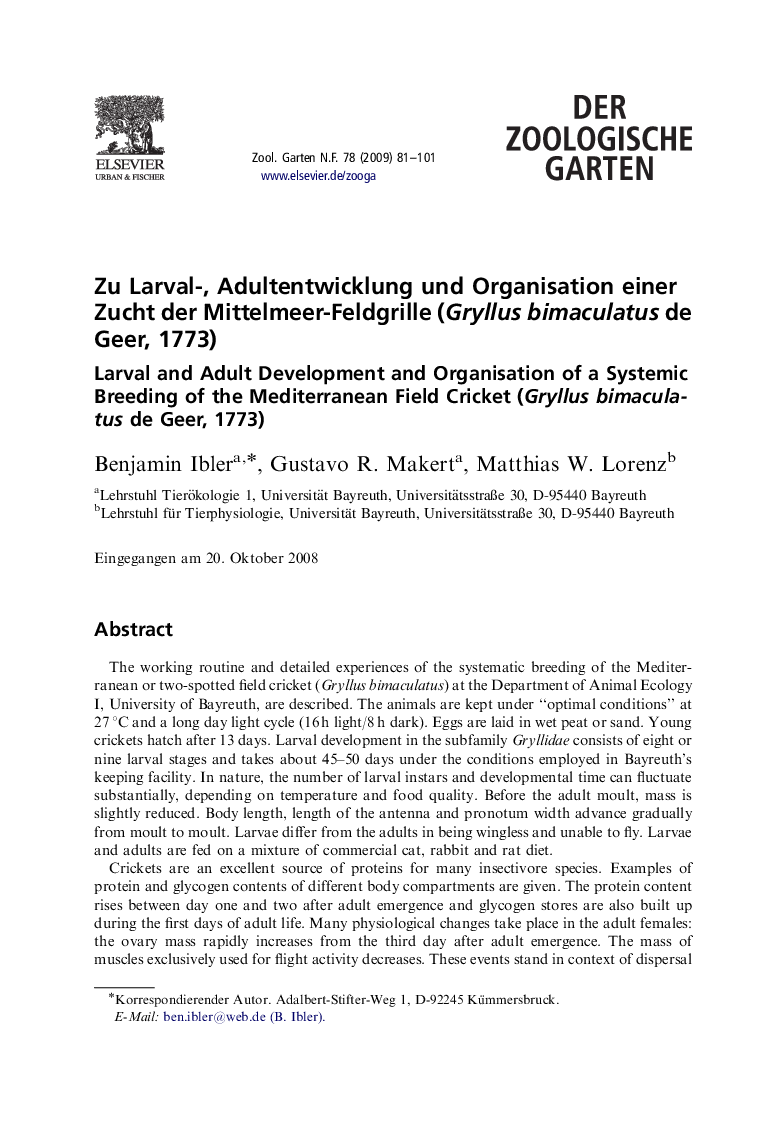| Article ID | Journal | Published Year | Pages | File Type |
|---|---|---|---|---|
| 2473099 | Der Zoologische Garten | 2009 | 21 Pages |
The working routine and detailed experiences of the systematic breeding of the Mediterranean or two-spotted field cricket (Gryllus bimaculatus) at the Department of Animal Ecology I, University of Bayreuth, are described. The animals are kept under “optimal conditions” at 27 °C and a long day light cycle (16 h light/8 h dark). Eggs are laid in wet peat or sand. Young crickets hatch after 13 days. Larval development in the subfamily Gryllidae consists of eight or nine larval stages and takes about 45–50 days under the conditions employed in Bayreuth's keeping facility. In nature, the number of larval instars and developmental time can fluctuate substantially, depending on temperature and food quality. Before the adult moult, mass is slightly reduced. Body length, length of the antenna and pronotum width advance gradually from moult to moult. Larvae differ from the adults in being wingless and unable to fly. Larvae and adults are fed on a mixture of commercial cat, rabbit and rat diet.Crickets are an excellent source of proteins for many insectivore species. Examples of protein and glycogen contents of different body compartments are given. The protein content rises between day one and two after adult emergence and glycogen stores are also built up during the first days of adult life. Many physiological changes take place in the adult females: the ovary mass rapidly increases from the third day after adult emergence. The mass of muscles exclusively used for flight activity decreases. These events stand in context of dispersal flights before reproduction. The fat body acts as the main compartment for synthesis and storage of highly energetic substrates (lipid and protein), the flight muscles mainly store protein and glycogen.
